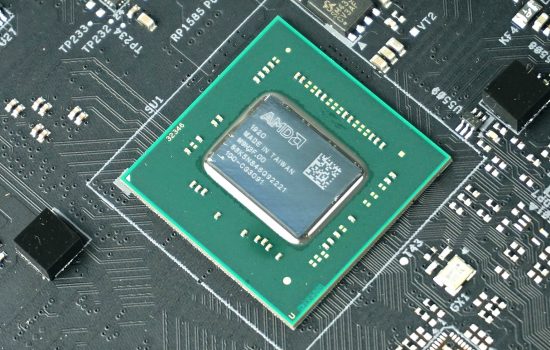Conclusion
The most “lightweight” AMD Navi 31 (XL) GPU, the slowest memory subsystem, but also the lowest price. That’s the RX 7900 GRE compared to the RX 7900 XT. This Radeon is also noticeably cheaper compared to the RTX 4070 Super, although the GeForce’s power efficiency is more favourable. The gaming performance of the RX 7900 GRE (RTX 4070S), meanwhile, is comparable. That is, as long as you won’t miss ray-tracing graphics..
Conclusion
The RX 7900 GRE is the most efficient of the RDNA 3 Radeons. Gaming performance, meanwhile, is on average between the RX 7900 XT and the RX 6800 (XT), with the RX 7900 GRE roughly in the middle between the two cards. Specifically, with an 11-16% (1080–2160p) deficit to the RX 7900 XT and a 19–28% lead over the RX 6800.
Compared to the RX 6800 XT, it’s 7-14% to the upside (for the RX 7900 GRE). But that’s at significantly higher efficiency. The RX 7900 GRE in the tested design (Gigabyte Gaming OC) is approximately 29–37% more efficient than AMD’s reference RX 6800 XT (RDNA 2). However, the RX 7900 GRE Gaming OC doesn’t really measure up to the Nvidia RTX 4070 Super in this regard. The gaming-wise “similarly powerful” GeForce is in a higher league. This actually includes gaming performance if ray-tracing graphics are taken into account, where the RTX 4070S significantly dominates (over the RTX 7900 GRE). In Battlefield V, at comparable settings the framerate of the RTX 4070S is more than 50% higher, then around 30% in Cyberpunk 2077 (outside of RT Overdrive, on Ultra, without Path Tracing), and similarly in Shadow of the Tomb Raider. In the original Metro Exodus, it’s a little less so. Anyway, it’s probably safe to say that an RT fan won’t find saving with the RX 7900 GRE beneficial. However, if you can live without the ray-tracing graphics, the situation changes and the gaming performance of these graphics cards (RX 7900 GRE and RTX 4070S) is comparable on average.
In the target 1440p resolution, the Radeon (RX 7900 GRE) scores better than the GeForce (RTX 4070 Super) for example in Assassin’s Creed: Valhalla, in Borderlands 3, in Red Dead Redemption 2 and has a small lead without ray tracing even in Control or in Cyberpunk 2077. Of course, it’s always at higher power consumption. The latter is linked to the bulkier design (RX 7900 GRE) with a larger cooler. This also applies to the Gigabyte Gaming OC, where one can highlight the super-low temperature, although the noise is higher. This can be quickly and easily corrected by selecting the silent BIOS option, or manually. For someone, even after changing the BIOS, the operation may still be noisier than they would like, but the good news is that there is still a margin for a custom speed curve. The margin is there not only in terms of cooling the GPU, but also the memory. This is naturally due to its lower bandwidth, for which it has a lower power consumption.
In terms of computing performance, the negative speed difference of the RX 7900 GRE compared to the RX 7900 XT is more pronounced than in games. For example, in Blender the smaller and slower memory is more noticeable, and the RX 7900 GRE Gaming OC is about 30–40% slower compared to the Sapphire RX 7900 XT, depending on what’s being rendered (via OpenCL). Under OpenGL, in SPECviewperf tests the gap is already smaller, and in select applications the RX 7900 GRE already outperforms even the RTX 4070 Super, but that’s pretty rare. Under CUDA, the otherwise equivalent GeForces are generally significantly faster than Radeons under other APIs.
In terms of acoustic profile, the coil noise of the RX 7900 GRE Gaming OC can be classified as “average”. Most of the aerodynamic noise is then in the 750–1500 Hz band, as is common with relatively smaller, low-profile fans. GPU clock speeds of the RX 7900 GRE are relatively lower (about 2370–2440 MHz in games, depending on load). Power consumption at lower loads is average. Around 40 W when video decoding, similar as in a GPU-accelerated Google Chrome web environment (around 36 W). At idle (on a Windows OS desktop) the power consumption (at about 23 W) is quite high and with two higher-resolution monitors or one faster one, it’s even 13% higher, in the same proportion as other cards with the AMD Navi 31 graphics core.
Overall, we rate the Gigabyte RX 7900 GRE Gaming OC 16G positively and for its attractive price/performance ratio it earns the editorial award „Smart buy!“. Compared to the RTX 4070 Super, power consumption is higher, gaming performance with RT graphics is weaker, but AMD/Gigabyte responds to all these things with a lower price. Whether adequately, the market will tell.
English translation and edit by Jozef Dudáš
| Gigabyte RX 7900 GRE Gaming OC 16G |
| + Very high performance (also suitable for 2160p/4K gaming) |
| + Attractive price/performance ratio |
| + Without ray-tracing graphics settings, it outperforms the RTX 4070 Super at a lower price |
| + Efficient and overall solid Windforce (3X) cooler... |
| + ... especially for the lower end, to which the "Gaming OC" belongs within Gigabyte's lineup |
| + Robust build with a metal backplate... |
| + ... and minimalistic ARGB LEDs |
| + AV1 encoding support |
| + DisplayPort version 2.1, which is missing on GeForce cards |
| + One of the most efficient Radeon RX 7000s... |
| - … but still noting the poorer power efficiency |
| - Lower ray-tracing graphics performance. Does not even reach the level of GeForce from the Ampere generation (RTX 3000) |
| Suggested retail price: 615 EUR |
We would like to thank the Datacomp e-shop for their cooperation in providing the tested hardware
- Contents
- Gigabyte RX 7900 GRE Gaming OC 16G in detail
- Table of parameters
- Methodology: performance tests
- Methodology: how we measure power draw
- Methodology: noise and sound measurement
- Methodology: temperature tests
- Test setup
- 3DMark
- Age of Empires II: DE
- Assassin’s Creed: Valhalla
- Battlefield V
- Battlefield V with DXR
- Borderlands 3
- Control
- Control with DXR
- Counter-Strike: GO
- Cyberpunk 2077
- Cyberpunk 2077 with DXR
- DOOM Eternal
- F1 2020
- FIFA 21
- Forza Horizon 4
- Mafia: DE
- Metro Exodus
- Metro Exodus with DXR
- Microsoft Flight Simulator
- Red Dead Redemption 2 (Vulkan)
- Red Dead Redemption 2 (Dx12)
- Shadow of the Tomb Raider
- Shadow of the Tomb Raider with DXR
- Total War Saga: Troy
- Wasteland 3
- Overall gaming performance and performance per euro
- CompuBench (OpenCL)
- SPECviewperf 2020 and SPECworkstation 3
- FLOPS, IOPS and memory speed tests
- 3D rendering 1/2 (LuxMark and Blender@Cycles)
- 3D rendering 2/2 (Blender@Radeon ProRender and Eevee)
- Photo editing (Adobe Photoshop, Lightroom and Affinity Photo)
- Broadcasting (OBS and Xsplit)
- Password cracking
- GPU clock speed
- GPU and VRAM temperatures
- Net graphics card power draw and performance per watt
- Analysis of 12 V rail power supply (higher load)
- Analysis of 12 V rail power supply (lower load)
- Analysis of 3.3 V rail power supply
- Noise level
- Frequency response of sound
- Conclusion













